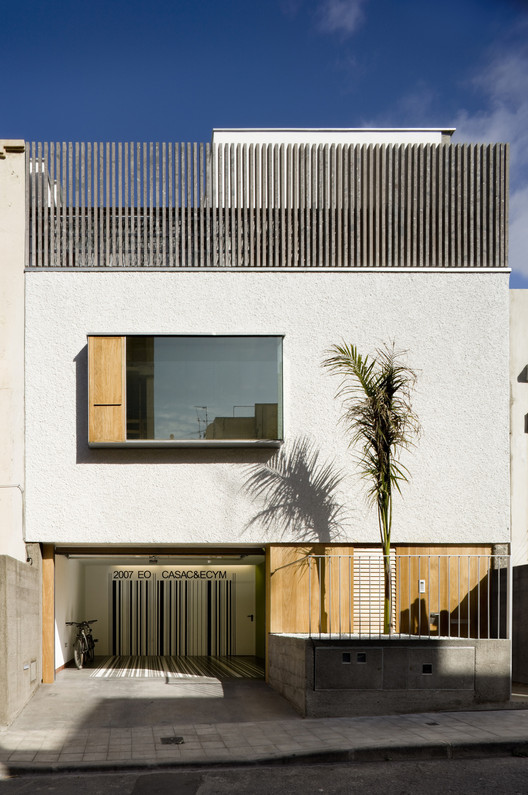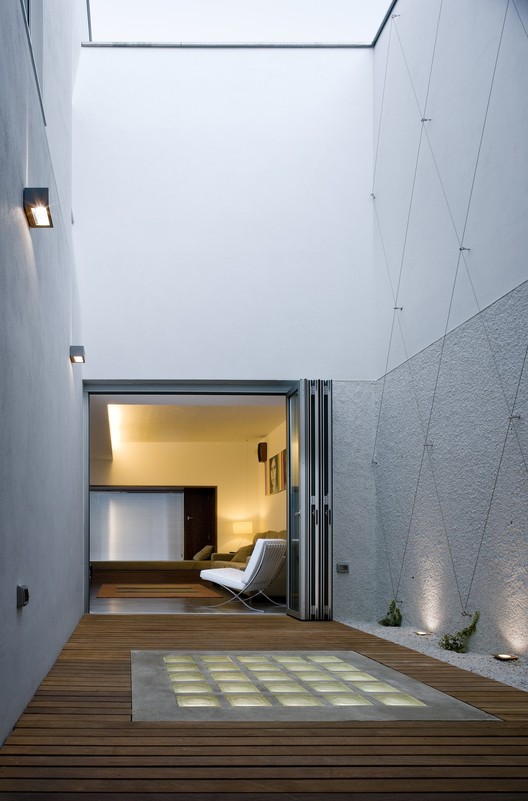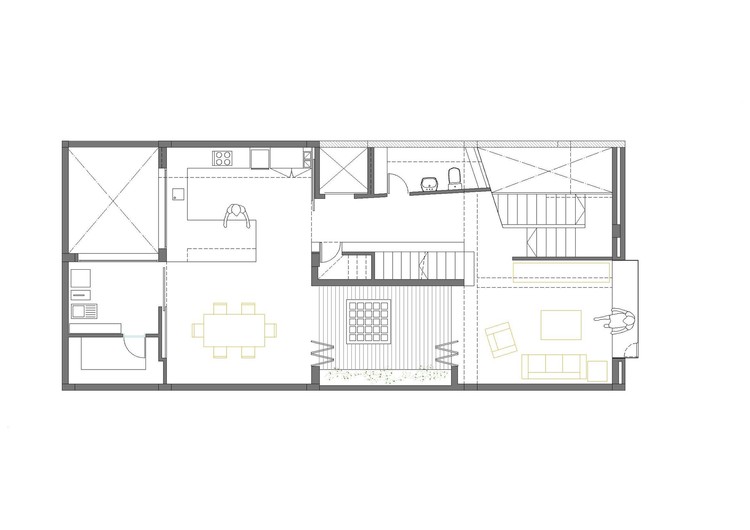
Architects: Equipo Olivares Arquitectos Location: Santa Cruz de Tenerife, Canary Islands, Spain Design Team: Javier Pérez-Alcalde Schwartz Photographs: Lluís Casals
The house is designed taking into account the following aspects:
Adaptation of the volume to both dividing walls. Regulations allow three floors, so the house is higher than others around. That is why the top floor is setback (allowing the sunlight to come into the house through a fanlight) and we decided the height of the building, adapting it to the house on the left, while the dividing wall on the right is a continuation of the façade to respond to the smaller height of the house on the right.

Vanishing point. We are dealing with a narrow street with its best perspective facing the nearby mountains and the house is pointed onto its inside light and it only overlooks through a glass urn facing southeast.

Light. The house therefore, looks into the interior and wants to take advance of a deep plot, so its section is organized to let natural lighting pass to interior rooms. Through fanlights and glass bricks, sun comes widely into the bathrooms and common areas, and the glass, set out in fronts and interior handrail, contributes to its diffusion.

Flexibility. We wanted the house to be adaptable: to the climate in Santa Cruz (sitting-room and kitchen-dinning room are joined by a central courtyard thanks to some glass folding structures, becoming just one space most of the year); to different ways of living in (the bedroom is open to get totally integrated with the stairs and hall); to familiar eventualities (garage is also a play area); to elders or moves (the house has also a lift); to the mixed use (a library that goes along a path, furniture designed for that purpose).

Vegetation. From the palm in the facade helping composition to the interior walls of the courtyards (that are covered with a rhombus mesh through which the creepers will climb) vegetation definitely contributes to the essence of this house.






















